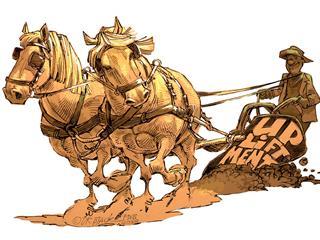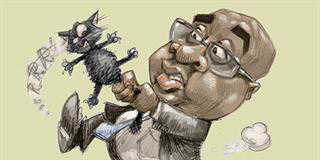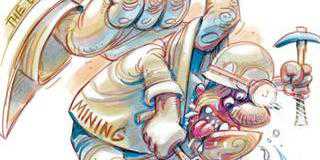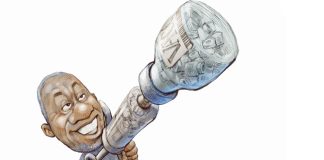
The South African government appears to want what is best for the emerging farmer. At first glance, it would seem that this ‘best’ includes a new tractor with all the trimmings. However, more and more small-scale farmers are finding it more economical to use draft animals in place of tractors.
Using animals means that these farmers no longer have to wait in line for contractors to prepare their lands. Using their own animals, they can plough, harrow, plant and weed their lands how and when they want to. Consequently, at the end of the season they are likely to see an increase in yield and lower input costs to pay back. Come harvest time, they have more money in their pockets.
According to the Animal Traction Network for Eastern and Southern Africa (ATNESA) and the South African Network of Animal Traction (SANAT), the term ‘animal traction’ refers not only to the drawing of loads over a surface, but the carrying of loads (pack animals) and the powering of mechanical linkages (animal-powered pumps and threshing machines). In all cases, the animal applies traction through its feet to a surface in order to move or carry a load.
With this definition in mind, it should be remembered that ‘mechanised agriculture’ does not involve only the use of tractors, harvesters and so forth, but anything that can simplify and speed up work, and reduce the amount of human effort needed to carry out arduous on-farm activities. Tractors, bakkies, stationary engines and draft animals are all part of mechanised farming.
The decision as to which of the two power options – tractors or draft animals – to use must be based on viability as much as affordability. It should thus be based on the best all-round advantage for the farmer or rural community. However, it is important to note that a tractor and a draft animal are complementary, and may be used separately or together, depending on the circumstances.
For example, a sizable land may easily be ploughed with a tractor, but weeding it with a tractor later may be more difficult. Using animal traction may be more effective.
Pushing for change
In a 1994 SANAT survey, 60% of the small-scale farmers interviewed were using animal traction in one form or another. A statistical extrapolation indicated that this represented about 400 000 small-scale farmers throughout the country. Many of these farmers also used tractors, and were supported by various government projects through funding and training.
This was not the case with animal traction; there were no training or research centres and only a few implement and harness suppliers. The media and most government officials considered animal power a backward technology belonging to a bygone age.
SANAT was mandated to change this situation, and the Animal Traction Centre (ATC) at the University of Fort Hare was created, with funding from Anglo American. Since its inception, the ATC has been offering training courses and conducting research in animal traction, while SANAT has worked hard to promote and gain government support for the use of animal traction.
Unfortunately, despite SANAT’s hard work, the situation today is no different to that of 1994. The misconception that draft animal power is a thing of the past that will retard farmer development persists, particularly amongst those in higher government circles.
Empowering farmers
Many other African countries acknowledge the role that draft animals can play; our government and department of agriculture should follow their example. They need to make farmers aware of the advantages of using draft animal power, and fund the establishment of training, research and extension centres.This will go a long way to fulfilling government’s stated goal of empowering the country’s small-scale farmers.
It is imperative that any future agricultural power policy recognise the important role that animal traction has to play in modern farming, and that it can complement other options. It is an affordable, sustainable technology – one that, given the ever-increasing costs of tractors, spare parts and diesel, is becoming ever more attractive.
One could even suggest that animal traction empowers a small-scale farmer more so than a tractor. As stated, there is
no waiting in queues and a farmer using draft animals can carry out all farming activities as effectively as with a tractor.
Yes, it may take longer, but ploughing and weeding at the right time means a boost in profits.













